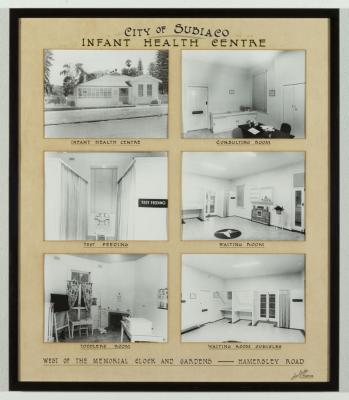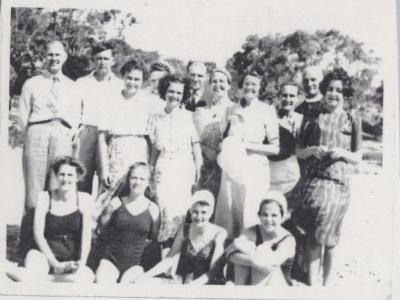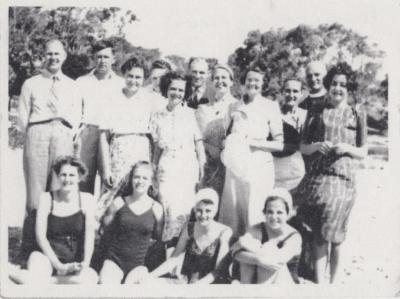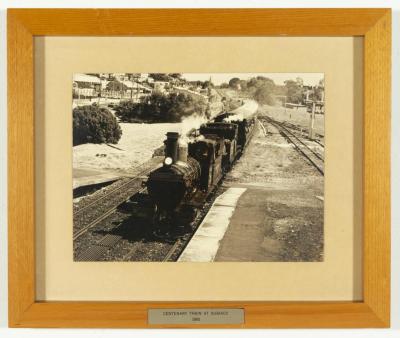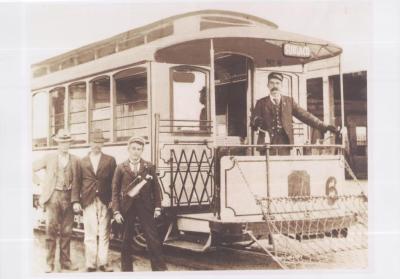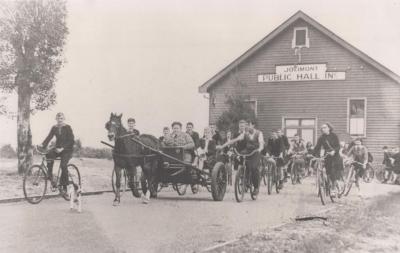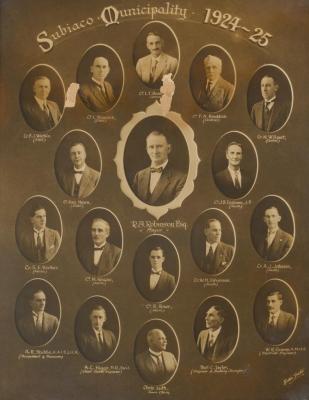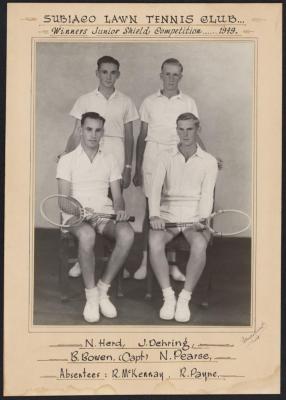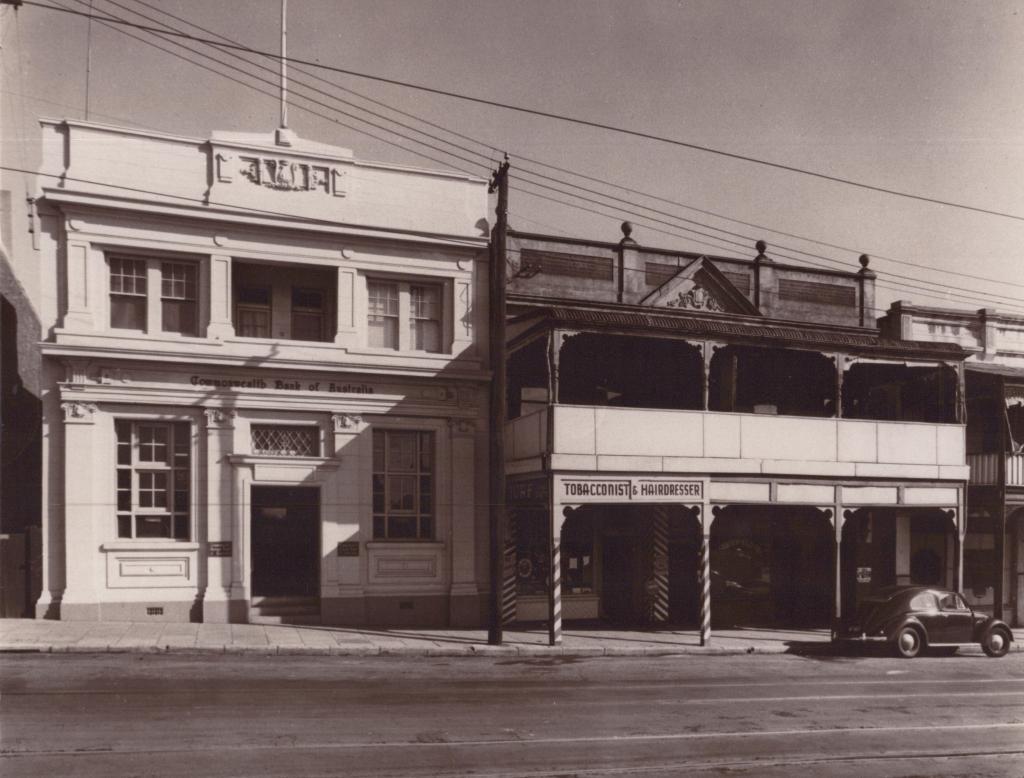PHOTOGRAPH: COMMONWEALTH BANK OF AUSTRALIA, SUBIACO BRANCH, CIRCA 1960
c. 1960Black and white photo of the Subiaco branch of the Commonwealth Bank of Australia, on the west side of Rokeby Road, c 1960. The ornate frontage has pillars at each end of the buildi and & beside the wide front door, and the upper storey has shorter pillars next to casement windows. Next to the bank is another commercial building with a verandahed upper storey. A sign on part of the second building says 'Tobacco and t & Hairdresser, and four posts are painted with stripes. A small Volkswagon car is parked outside this building. The photograph was donated together with a book of the history of the Subiaco Branch, 1925-1975 (95.43) In 1995 the bank building was occupied by Ramsay's Bookshop
Details
Details
Originally a carrier (1915), then 111-113 converted to State Savings Bank (1928). Constructed from 1928.
Subiaco began to develop as a residential and commercial area in the 1890s, with the first buildings being established along the railway line. In 1895 Rokeby Road was not yet gazetted and Hay Street was called Broome Road. By the turn of the century most of the main roads in central Subiaco were built, including Rokeby, Heytsebury, Hamersley, Bagot, Townshend, Park and Nicholson Roads. Many businesses had been established in Broome Road. Broome Road was named after Governor Broome, and was renamed Hay Street after Vice-Secretary of Colonies, 1829.
There were many land releases in the late 1890s and early 1900s as Subiaco become a popular place to settle, and businesses were attracted to the opportunity of opening in a new but stable suburb. The Rokeby Road and Hay Street commercial area was firmly established by 1915.
Over the years the nature of businesses have changed. Originally there were estate agents, dressmakers, tailors, confectioners, drapers, grocers, restaurateurs and bakers; in fact most shopping could be done without leaving the suburb.
local and business history
Other items from Subiaco Museum
- TOY: SPINNING TOP
- TOY: MAGIC LANTERN
- PHOTOGRAPH (FRAMED): CITY OF SUBIACO, INFANT HEALTH CENTRE
- PHOTOGRAPH: ST. ANDREWS SUBIACO SUNDAY SCHOOL PICNIC GROUP, 1943 PHOTOGRAPH: ST. ANDREWS SUBIACO SUNDAY SCHOOL PICNIC GROUP, 1943
- PHOTOGRAPH: ST. ANDREWS SUBIACO SUNDAY SCHOOL PICNIC GROUP, 1943
- PHOTOGRAPH (FRAMED): CENTENARY TRAIN AT SUBIACO, 1981
- PHOTOGRAPH (FRAMED): SUBIACO BOYS CYCLING CLUB, CIRCA 1914
- PHOTOGRAPH: FIRST TRAM, SUBIACO 1900
- PHOTOGRAPH (FRAMED): JOLIMONT HALL SPORTS CLUB BIKE HIKE, 1939
- PHOTOGRAPH: JOLIMONT HALL SPORTS CLUB BIKE HIKE, 1939
- PHOTOGRAPH: THE SUBIACO MUNICIPALITY COUNCILLORS AND STAFF, 1924-25
- PHOTOGRAPH: WINNERS JUNIOR SHIELD, SUBIACO TENNIS CLUB, 1949
